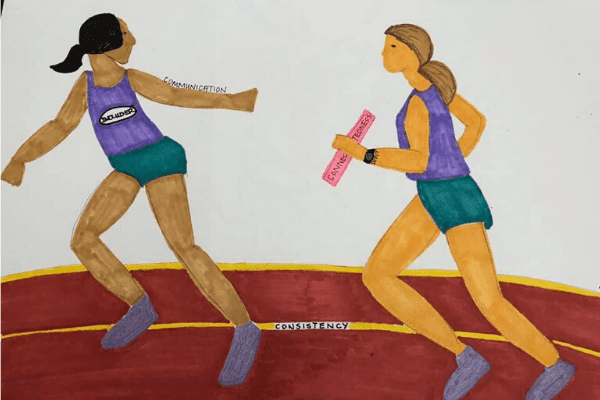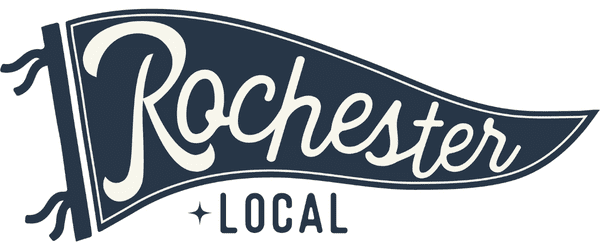 Personality tests and their insights have long been used in workplaces to help people identify their dominant characteristics, and I’m guessing all of our readers have completed at least one of these in their lifetime. This previous August my school district kicked off a year-long professional development course centered on the CliftonStrengths (formerly Clifton StrengthsFinder). Hands down, I have learned the most about myself from this study. The primary focus of the CliftonStrengths is to identify your inherent strengths/themes and help you use them fully. On their website it says, “Your CliftonStrengths themes are your talent DNA. They explain the ways you most naturally think, feel and behave.” As part of our staff training, we have been encouraged not only to consider our own strengths, but recognize that the different strengths of our colleagues help us thrive as an organization. And while this is true, what has truly given me pause is how a better understanding of my strengths has helped me understand why I am so sensitive to when others don’t demonstrate the same values.
Personality tests and their insights have long been used in workplaces to help people identify their dominant characteristics, and I’m guessing all of our readers have completed at least one of these in their lifetime. This previous August my school district kicked off a year-long professional development course centered on the CliftonStrengths (formerly Clifton StrengthsFinder). Hands down, I have learned the most about myself from this study. The primary focus of the CliftonStrengths is to identify your inherent strengths/themes and help you use them fully. On their website it says, “Your CliftonStrengths themes are your talent DNA. They explain the ways you most naturally think, feel and behave.” As part of our staff training, we have been encouraged not only to consider our own strengths, but recognize that the different strengths of our colleagues help us thrive as an organization. And while this is true, what has truly given me pause is how a better understanding of my strengths has helped me understand why I am so sensitive to when others don’t demonstrate the same values.
After taking the CliftonStrengths assessment, I received the following list of strengths for myself, from first through fifth: Includer, Connectedness, Communication, Input, and Consistency. Includer? That is 100% me. The CliftonStrengths overall theme description for Includer states, “People who are especially talented in the Includer theme are accepting of others. They show awareness of those who feel left out, and make an effort to include them.” I cannot stand when people are excluded. There are times in my life when I have felt excluded, and while that hurt my feelings, it has always felt twice as devastating to watch exclusion happen to others, whether they are students or staff members at school, or in friendship groups. Before taking the CliftonStrengths assessment, I had no idea why it bothered me so much to see exclusion happen. Now that I know it is my strength to include others, and that it is not all that common as a dominant strength in our organization, it has helped me understand why I am so sensitive to it. Inclusion is built into my personality in a way that it is not built in for others. The way I am able to identify marginalized voices and bring them in to the table is not the weakness I used to think it was. Because others didn’t naturally have that same inclination, I assumed that I was the strange one for thinking the way I did. Changing my thinking about my Includer tendencies from a weakness to a strength is still a work in progress, but I’m on the right path now.
Following up my Includer strength is a Connectedness strength. People who are talented in Connectedness “have faith in the links between all things” and “help people realize they are part of the human family…and that their lives are intertwined with people they will never meet.” When an email went out about 2 years ago looking for staff members who would be interested in serving on our district’s diversity and equity committee, I immediately sent a note asking to be a part of the group. I had the opportunity to study abroad in multiple countries in college, and have seen firsthand that whether someone lives in a hut without electricity or in a towering Hong Kong high-rise, we have our human story in common. My heart breaks when I see the divisive stories on the news in our country these past few years, and I now know that I am more prone to this melancholy over our human disconnect because Connectedness is so high on my strengths list.
People with the Connectedness strength can also identify what is missing to enable a connection. In her Connectedness article on the Leadership Vision Consulting page, Linda Schubring wrote, “At times, people with Connectedness appear to be randomly connecting a variety of obscure thoughts… but give them time, because you may find they have an amazing ability to weave those thoughts together to create a beautiful pattern of meaning.” I have been on the receiving end of scoffs and snarky comments because in a meeting or presentation I ask questions to help fill in the missing pieces. With my Communication strength as number 3, I am often able to verbalize my thinking and questions on the spot, and will do so for the benefit of the group…but often others will demean this contribution and roll their eyes. Now I can theorize that it is because they cannot see the connections for themselves…but it is still alienating, and I am sensitive to it and often curb my sharing because of those reactions. In meetings I am trying to remember that this connectedness strength is valuable and not to let other people invalidate it.
I won’t go any further into the analysis of my own strengths…I simply wanted to share examples of how learning these strengths helped me understand myself better. As a culminating activity, the presenter at our staff development sessions asked each of us to come up with an image or concept to represent our five strengths together, so I have included my image below. In addition to this image, I have identified a new mantra for my personality: No room at this table? Let’s build a bigger table so we can sit together.

Don Clifton wrote, “There is no more effective way to empower people than to see each person in terms of his or her strengths.” I wholeheartedly agree, and encourage you to explore your own strengths and learn from them as much as I did. In addition, hopefully with this new lens you can focus on the strengths your colleagues, children, and spouses bring to their interactions. While their strengths will vary greatly from yours, just think of what you can accomplish together!
Resource note:
In addition to the Strengths Insight Guide that you can print after you complete the assessment, I have really enjoyed reading the information published by Leadership Vision Consulting on each strength, and included some of those insights in this article.





